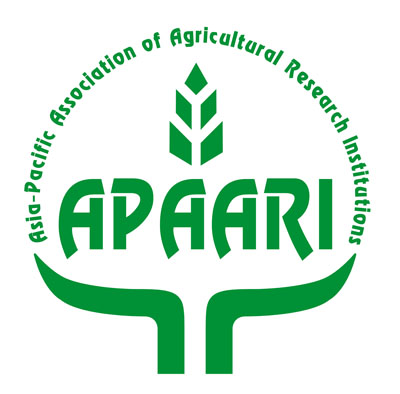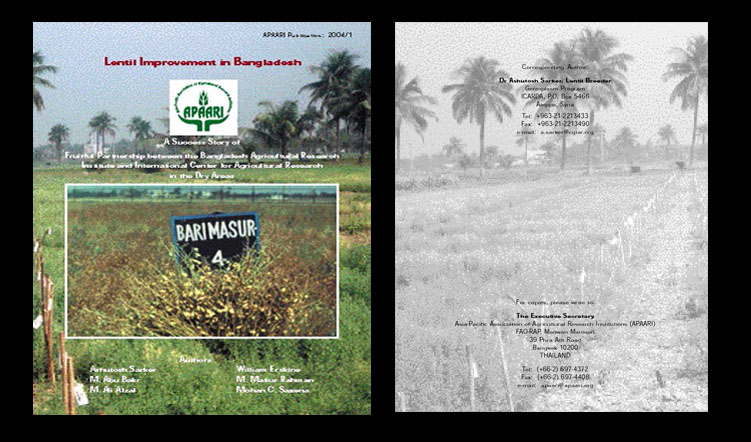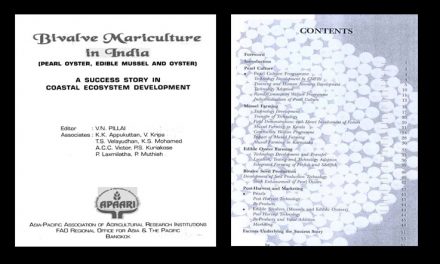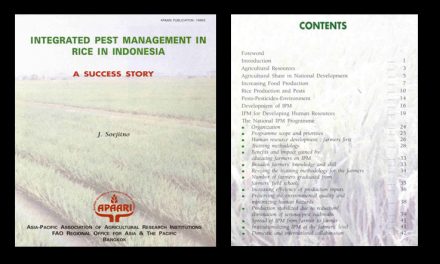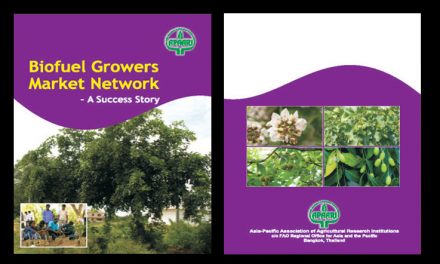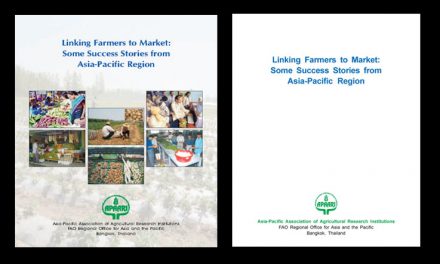Among the major food crops in the Asia-Pacific region, particularly South, East and Southeast Asia, pulses as nutritionally rich food, play an important role in improving the diet of the people. The countries in the region grow a dozen of summer and winter pulses to meet the dietary requirements, particularly for the poorer section of the society, to whom animal protein is less accessible. APAARI plays the role of facilitator to promote and coordinate agricultural research and development in the region through research networking. It has been supportive to the Cereals and Legumes Asia Network (CLAN), administered from ICRISAT, India. Lentil being an important pulse crop of Asia-Pacific region (which covers about 53% and produces 49% of world’s lentil, and recently became a CLAN mandate crop, APAARI has been instrumental in dissemination of information, material exchange and sharing of resources among the members of CLAN.
In Bangladesh, production of major food crops – rice, wheat, pulses and oilseeds – does not meet the present requirements of country’s population of about 135 million. The gap is widening both in quantity and quality. Agricultural scientists are faced with the complex and urgent task of bringing the “population – food supply” equation into rational balance. Rice and wheat have been the focus of concerted government effort in research and development. Similar attention was long overdue for the pulse crops, commonly known as poor man’s meat.
Pulses are vital components in diversification of Bangladesh’s predominantly rice-based cropping system. Lentil is the second most important pulse crop in terms of area (154,000 ha) and production (116,000 t), but ranks the highest in consumer preference and total consumption (BBS, 2002). Lentil seed is a rich source of protein and several essential micronutrients (Fe, Zn, ?-carotene) (Bhatty, 1988). Only red cotyledon type is used as food in Bangladesh, where it is boiled into soup-like dhal and eaten with flat bread (roti) or rice. Khichuri is another popular dish, which is made from a mixture of split lentil seed and pounded wheat or rice. Lentil straw is valued animal feed.
Domestic pulse production satisfies less than half of the country’s needs. The rest, some 140,000 tonnes, is imported at a cost of about US$ 32.2 million per annum. Lentil, purchased mostly from Australia, Nepal, Turkey and Canada, accounts for US$17.6 million (MOA, 2002). The resulting high prices have led to widespread protein malnutrition, especially among vulnerable groups, such as rural children and the aged. Bangladeshis consume about 12.0 g of pulses per capita per day, far below the 45 g per day recommended by FAO/WHO (Islam and Ali, 2002). Meat production, including fish, has declined consistently in recent years, so animal sources of protein are also priced beyond the reach of the poor.
